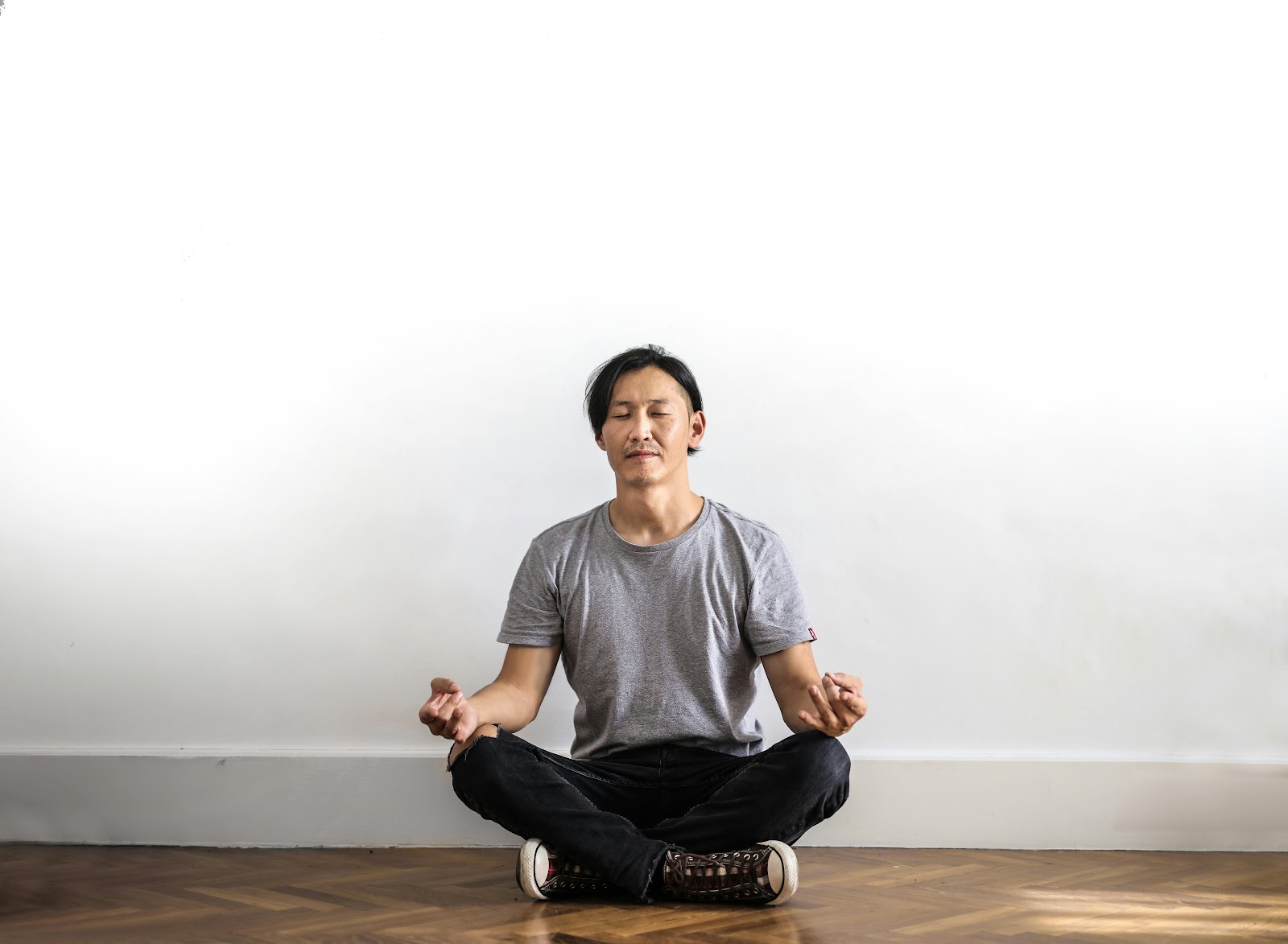The integration of yoga and meditation into addiction recovery programs has garnered increasing attention due to their potential to enhance emotional well-being and foster resilience. These practices not only provide individuals with tools to manage stress and anxiety but also promote mindfulness, facilitating a deeper understanding of one’s emotional landscape. Additionally, the communal aspect of group sessions can strengthen connections and accountability among participants. Yet, the full scope of how these disciplines can transform the recovery process remains to be explored, particularly regarding their long-term impact on relapse prevention and personal growth.
Enhancing Emotional Well-being
A significant number of individuals struggling with addiction often grapple with underlying emotional challenges, making the journey to recovery particularly intimidating. These emotional hurdles may include feelings of shame, guilt, or anxiety, which can complicate the recovery process. Mindfulness practices, such as yoga and meditation, offer valuable tools for enhancing emotional well-being during this critical time. Engaging in mindfulness practices encourages individuals to cultivate present-moment awareness, fostering a deeper understanding of their thoughts and feelings. By learning to observe their emotional responses without judgment, individuals can develop emotional resilience an essential skill for maneuvering the ups and downs of recovery. Yoga, with its focus on both physical and mental alignment, promotes relaxation and reduces tension, facilitating a sense of peace that is often elusive during addiction recovery. Moreover, meditation enhances self-awareness, allowing individuals to confront and process their emotions constructively. This reflective practice can lead to improved emotional regulation, empowering individuals to respond to triggers with greater clarity and composure. Ultimately, integrating mindfulness practices into the recovery journey not only nurtures emotional well-being but also lays a solid foundation for lasting change and personal growth.
Reducing Stress and Anxiety
Many individuals commencing on the challenging path of addiction recovery often encounter heightened levels of stress and anxiety, which can impede their progress. These feelings are natural responses to the significant life changes and emotional upheaval associated with recovery. Incorporating yoga and meditation into one’s routine can be a powerful tool for managing these challenges. Mindful breathing exercises are particularly effective in reducing stress and anxiety. For more information on healthy coping strategies, you can refer to the CDC’s page on healthy ways to cope with stress. By focusing on each breath, individuals can create a sense of calm and presence, helping to mitigate overwhelming feelings. This practice encourages awareness of the body and mind, fostering a deeper connection to one’s emotional state. Additionally, various relaxation techniques, such as progressive muscle relaxation and guided imagery, can further alleviate tension. These techniques promote physical and mental relaxation, enabling individuals to confront their emotions and experiences with greater resilience. The integration of yoga and meditation into addiction recovery can provide essential coping mechanisms. By prioritizing stress reduction, individuals can enhance their overall well-being and better navigate the complexities of recovery, setting a solid foundation for lasting change.
Improving Focus and Clarity
As individuals work to manage stress and anxiety in their recovery journey, enhancing focus and clarity becomes increasingly important. The practice of yoga and meditation fosters mindful awareness, allowing individuals to tune in to their thoughts and feelings without judgment. This heightened state of awareness helps to identify triggers and cravings associated with substance use, creating a space for healthier responses. Additionally, engaging in yoga and meditation promotes cognitive flexibility, which is essential for adapting to the challenges of recovery. Cognitive flexibility enables individuals to shift their thinking and behaviors, making it easier to navigate the ups and downs of life without resorting to substances. By practicing mindfulness, individuals learn to observe their thought patterns and reactions, leading to more intentional choices. Incorporating these practices into daily routines not only sharpens focus but also enhances emotional regulation, providing a solid foundation for long-term recovery. As clarity improves, individuals become more equipped to set and achieve their goals, fostering a sense of accomplishment and hope. For free resources on mindfulness practices like yoga and meditation, consider exploring MindfulNYU.
Building a Supportive Community
Cultivating a supportive community is essential for individuals traversing the challenges of addiction recovery. Engaging with others who understand the journey can foster a sense of belonging and validation. Peer support plays a significant role in this process, as shared experiences can diminish feelings of isolation and shame. Connecting with others who have faced similar struggles allows individuals to gain insights and encouragement, reinforcing their commitment to recovery. Participating in group activities, such as support meetings, yoga classes, or meditation sessions, can further enhance this sense of community. These activities not only provide structured environments for sharing and learning but also create opportunities for building lasting friendships. The collective energy in these settings can be uplifting and motivating, reinforcing the belief that recovery is achievable. Additionally, surrounding oneself with a supportive network helps individuals navigate the emotional and psychological challenges of recovery. This community can offer accountability and celebrate milestones, making the journey less intimidating. Ultimately, building a supportive community is a fundamental component of recovery, providing the strength and resilience needed to overcome addiction and embrace a healthier, more fulfilling life.

Final Thoughts
Incorporating yoga and meditation into addiction recovery offers significant advantages that extend beyond physical well-being. These practices enhance emotional resilience, reduce stress and anxiety, and improve mental clarity. Additionally, they foster a sense of community, promoting connections and accountability among individuals on their recovery journey. Embracing these holistic approaches can lead to a more balanced and fulfilling life, supporting long-term recovery and personal growth. The integration of mindfulness practices is essential for sustainable healing and transformation. If you or someone you care about is grappling with substance abuse, remember that support is within reach. At Bluecrest, we provide an intensive outpatient program customized to suit individual needs, fostering recovery and optimism. Our team of devoted professionals is dedicated to offering the guidance, support, and tools needed to navigate the path to sobriety.
Frequently Asked Questions
How Does Yoga Help With Cravings During Recovery?
Yoga can greatly aid in managing cravings during recovery by fostering mindful breathing and enhancing physical awareness. Through intentional breathing techniques, individuals can cultivate a sense of calm and focus, which helps to mitigate the intensity of cravings. Additionally, increased physical awareness promotes a deeper connection to the body, enabling individuals to identify and address their emotional and physiological triggers. This holistic approach supports resilience and empowers individuals on their path to recovery.
Can Meditation Be Practiced Anywhere During Treatment?
Yes, meditation can indeed be practiced anywhere during treatment, making it a versatile tool for individuals in recovery. Utilizing mindfulness techniques, such as focused breathing or body scans, allows individuals to cultivate awareness and reduce stress in various environments. These portable practices can be easily integrated into daily routines, providing moments of calm and reflection that support overall well-being. Embracing these techniques fosters resilience and encourages a deeper connection to one’s recovery journey.
What Types of Yoga Are Best for Beginners?
For beginners exploring yoga, gentle yoga and restorative yoga are excellent options. Gentle yoga focuses on slow movements and simple postures, making it accessible for those new to the practice. Restorative yoga emphasizes relaxation and stress relief, using props to support the body in restful poses. Both styles encourage mindfulness and self-awareness, fostering a supportive environment for personal growth. Engaging in these practices can enhance overall well-being and promote a sense of calm and balance.
How Often Should I Practice Yoga and Meditation?
Determining yoga frequency and meditation duration is essential for establishing a beneficial routine. For beginners, practicing yoga two to three times per week can promote flexibility and mindfulness. Meditation can be effectively incorporated daily, starting with sessions of 10 to 15 minutes. Gradually increasing both the frequency and duration allows for deeper engagement and personal growth. Consistency is key; listen to your body and adjust your practice to align with your personal needs and goals.
Are There Any Risks Associated With Yoga in Recovery?
While yoga is generally beneficial, certain risks may arise, particularly for individuals with physical limitations or misconceptions about its practice. Those new to yoga might push themselves too hard, leading to potential injuries. It is crucial to approach yoga with a clear understanding of one’s body and capabilities. Consulting with a qualified instructor and communicating any concerns can create a supportive environment, ensuring that yoga serves as a positive tool in the recovery journey.




